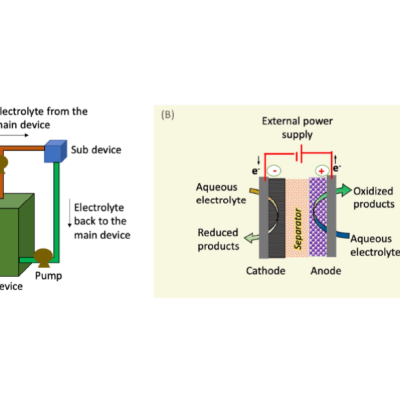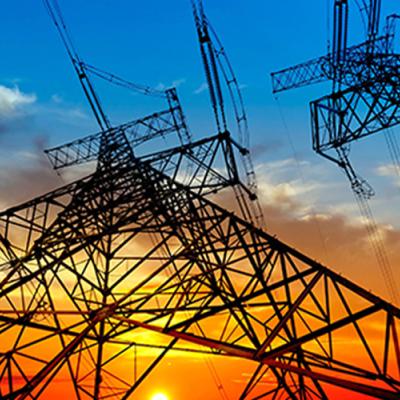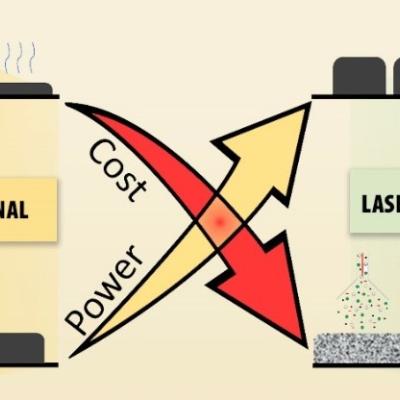LLNL researchers have designed and developed a novel high-density, high-channel count 3D connector that enables hundreds or thousands of nonpermanent connections within a compact footprint. The connector addresses limitations of currently used conventional approaches that were described previously, which have an artificial ceiling on the number of recording sites of modern devices of no more…
Keywords
- Show all (117)
- Instrumentation (38)
- Diagnostics (13)
- Carbon Utilization (6)
- Compact Space Telescopes (5)
- Laser Materials Processing (5)
- Therapeutics (5)
- Diode Lasers (4)
- Materials for Energy Products (4)
- Optical Damage Mitigation (3)
- RF Photonics (3)
- Synthesis and Processing (3)
- Ultrashort Pulse Lasers (3)
- 3D Printing (2)
- Additive Manufacturing (2)
- Direct Air Capture (2)
- Power Electronics (2)
- Vaccines (2)
- (-) Electric Grid (8)
- (-) Brain Computer Interface (BCI) (4)
- (-) Precision Optical Finishing (3)

A thyristor will stay conducting until the current through the device is zero (“current zero”) or perhaps slightly negative. LLNL’s approach is to use the opticondistor (“OTV”) to force this current zero in order to force the device into an “off” state. By combining a light-activated thyristor with an OTV, a noise-immune, high efficiency, high-power switching device can be constructed. The…

This invention takes advantage of the high water-solubility of key NIF KDP crystal optics and uses water as an etchant to remove surface defects and improve the laser induced damage threshold. Since pure water etches KDP too fast, this invention is to disperse water as nanosized droplets in a water-in-oil micro-emulsion. While in a stable micro-emulsion form, the surfactant additives prevent…
This invention proposes to use laser induced melting/softening to locally reshape the form of a glass optic. The local glass densification that results induces predictable stresses that through plate deformation mechanics yield a deterministic methodology for arbitrarily reshaping an optic surface figure and wavefront without the need to remove material.

The approach is to leverage the fact that a momentary “load” equal to the power transmission line impedance, (Z0), during the transient can suppress its propagation. Z(0) is typically a fixed impedance of several hundred ohms based on the geometry of most single wire transmission lines.
So, an isolated self-powered opticondistor (OTV) system may provide an ultrafast method of…

LLNL’s novel approach to enable MVDC power systems to operate safely is to develop a wideband gap bulk optical semiconductor switch (WBG BOSS) circuit breaker. For higher power, efficiency and temperature operation, vanadium-doped silicon carbide (V-doped SiC) appears to be the most promising basis for WBG BOSS circuit breaker (other dopants like aluminum, boron and nitrogen may further…

LLNL researchers has developed an approach to mitigate HER on the ‘plating’ electrode, which uses a sub-device as a rebalancing cell to restore electrolyte properties, including pH, conductivity, and capacity across the main device of the flow battery. This sub-device, which may need to be powered externally, has three major physical components: (1) a cathode electrode, (2) an anode electrode…

LLNL has developed a novel methodology for using commercially available automated sensors and actuators which can be deployed at scale in large appliances and plug-in EVs to provide as needed electric grid stabilization capabilities. The approach comprises of a population of voltage relays with a range of setpoints that would gradually reduce load as voltage falls. More severe voltage…

Improving the active material of the Zn anode is critical to improving the practicality of Zn-MnO2 battery technology. LLNL researchers have developed a new category of 3D structured Zn anode using a direct-ink writing (DIW) printing process to create innovative hierarchical architectures. The DIW ink, which is a gel-based mixture composed of zinc metal powder and organic binders, is extruded…

To address many of the aforementioned challenges of manufacturing LIBs and SSBs, LLNL researchers have developed a number of inventions that offer proposed solutions for their components:

Many of the disadvantages of current interface devices can be overcome with LLNL’s novel interface design, which relies on area array distribution where independent interface connector subassemblies are positioned in a planar grid. Not only is the interface device expandable area-wise (without increasing contact force), but it could also be expanded height-wise, with multiple layers of these…

Commercial fiber optic cables are the current standard for carrying optical signals in industries like communications or medical devices. However, the fibers are made of glass, which do not have favorable characteristics for applications that require flexibility and re-routing, e.g. typically brittle, limited selection of materials, dimension constraints.

LLNL has developed a brain-on-a-chip system with a removable cell-seeding funnel to simultaneously localize neurons from various brain regions in an anatomically relevant manner and over specific electrode regions of a MEA. LLNL’s novel, removable cell seeding funnel uses a combination of 3D printing and microfabrication that allows neurons from select brain regions to easily be seeded into…

LLNL's Slurry Stabilization Method provides a chemical means of stabilizing a polishing compound in suspension at working concentrations without reducing the rate of material removal. The treated product remains stable for many months in storage.

The design calculations that have been performed in exploring the potentialities of LLNL's new approaches to flywheel energy storage have been built on existing and past LLNL flywheel programs, including a program aimed at flywheel systems for the bulk storage of electricity at utility scale. To achieve the requirements of such systems, as mentioned above, LLNL has developed some key new…

